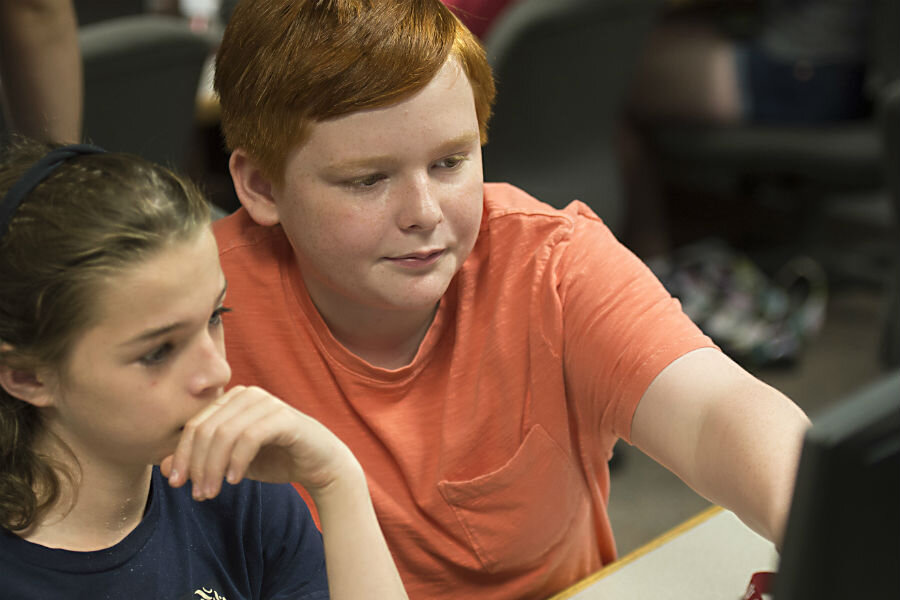How should children’s violent 'media diet' be managed?
Can doctors, parents, and policymakers help children navigate news, movies, and video games full of violence? A new policy statement by the American Academy of Pediatrics (AAP) published on Monday says "yes," and shows how.
The AAP reviewed research literature on the effects of viewing violence, and concludes that there is a "proven scientific connection between virtual violence and real-world aggression." It recommends that pediatricians, parents, and policymakers all do their part in assessing and managing the quality of the media that children consume.
This policy statement is "a more open-minded and less rigid take on media than the Academy has had in the past," Steven Schlozman, associate director of The Clay Center for Young Healthy Minds at Massachusetts General Hospital in Boston tells The Christian Science Monitor in a phone interview.
But he disagrees with the AAP conclusion that media violence causes aggression. Research has not found that viewing violent content causes violent behavior, but "some studies (though not all) have shown a statistically significant correlation" between the two, Dr. Schlozman writes in an email.
Nonetheless, the AAP policy statement asks doctors and parents to assess the individual situation first. "Sit down, figure out what they're watching, why they're watching it, why they enjoy it, and how they're able to talk about it," Schlozman says.
The AAP recommends pediatricians "consider making children's 'media diets' an essential part of all well-child examinations," and emphasize the quality of the content of media, not only quantity. Schlozman says parents should watch for content characteristics such as portraying violence without remorse.
"Stories have a creative side to them … that actually make people anti-violent," Schlozman says. A 2013 study by psychologists David Comer Kidd and Emanuele Castano, at the New School for Social Research in New York, showed that literary fiction can make people more able to detect and understand other people's emotions.
The AAP recommends that parents "coplay games with their children" to be able to censor content that they find inappropriate. Parents should watch movies and play video games before their children get their hands on them.
Both the AAP and Schlozman endorsed Common Sense Media as a guide to help parents select media content. "They don't say yes or no; they just say here's what you get. Check it out," Schlozman says.
But the decisionmaking process is even more complex because children vary more greatly than video games. "Yes, parents should know what their kids are watching and playing," Dr. Eugene Beresin, executive director of the Clay Center told US News. "They should also know who their kids are." Dr. Beresin explained, if a child has violent or anxious tendencies, he or she probably shouldn't play a violent video game.
Schlozman also stresses that a "one size fits all" approach will not benefit children or parents.
While the AAP recommends "first-person shooter games, in which killing others is the central theme, are not appropriate for any children," they distinguish children under the age of 6 as those who should be completely protected from virtual violence.
"Parents should understand that young children do not always distinguish fantasy from reality," the policy states.
The AAP recommends legislation that promotes "better and more specific information about the content of media of all forms" and that prohibits easy access to violent media for minors.
But at the state and local level, Schlozman says, "I worry about anything that limits in an unthoughtful way access to creative content."
"Today, we must act," AAP President Benard P. Dreyer said, according to a press release advertising the new initiative. "As president of the American Academy of Pediatrics, I am eager to convene our experts and think boldly about the role pediatricians and the AAP must play to confront the twin epidemics of violence and intolerance in the lives of children, adolescents, young adults, and their families."
This AAP report doesn't set any guidelines for the amount of time children should watch violent media. The AAP has previously recommended that children and teens limit screen time to one to two hours per day.







